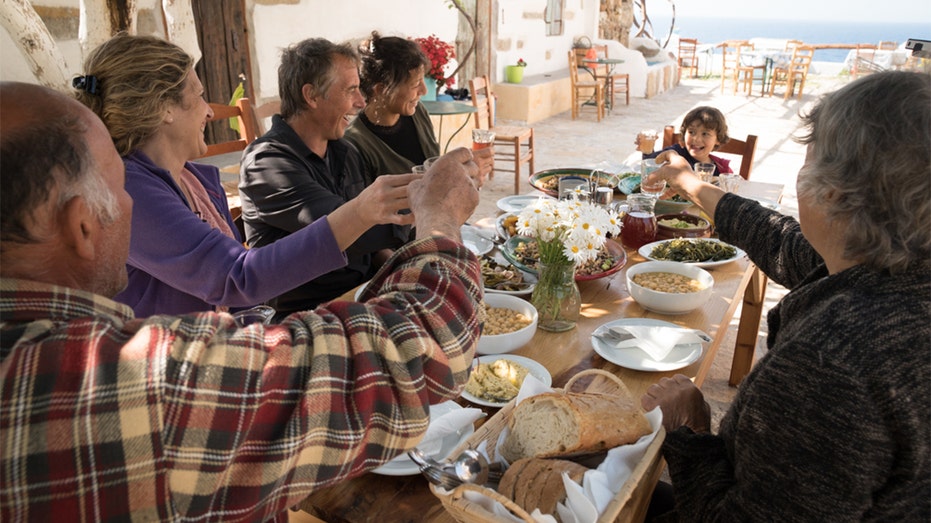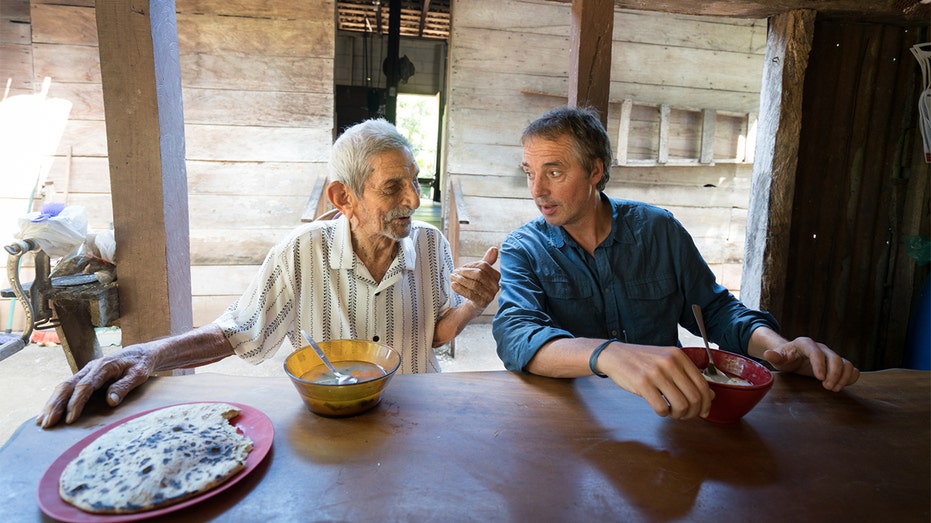How the 'Blue Zones' diet is helping Americans in these cities live longer
Dan Buettner's Blue Zones diet is helping Americans lose weight and live longer, healthier lives
Walk, talk and eat your way to 100.
That’s all it takes to live a healthier life, according to National Geographic author Dan Buettner who has spent decades researching what makes people happy and healthy in places he calls “Blue Zones.” Those include Okinawa, Japan; Sardinia, Italy; Ikaria, Greece; the Nicoya Peninsula in Costa Rica; and Loma Linda, Calif., where people, he says, have the highest life expectancy.
Centenarians living in Blue Zones have two things in common: thriving social calendars and a healthy diet. Now, U.S. cities are calling on Buettner’s expertise to help people in places like Fort Worth, Naples and throughout Hawaii live better.

People living in Blue Zones follow a healthy, plant-based diet and lead a social and active lifestyle. (Photo by David Mclain).
“In America, we tend to think health and happiness is something that we pursue," Buettner told FOX Business. "We get on the program, we get disciplined, but places where people live a long time they’re making good decisions day-to-day because of their environment.”
Buettner teamed up with National Geographic in 2004 to globetrot around the world to find the places where people were the healthiest. And he brought his holistic approach into U.S. cities across the country for his “Blue Zones Project,” a community-led initiative that works to improve the environment and daily routines that mimic how some of the healthiest people in the world live.
In Naples, Fla., 110 people took the Blue Zones challenge last July, where they followed a plant-based diet with meals comprised of ingredients like beans, lentils, chickpeas and whole grains. The group participated in pot lucks that mirrored social traditions in Okinawa, Japan.
“The first thing to realize is the happiest people in the world are eating mostly a plant-based diet and living longer. But if you look at every diet in the history of the world, they fail after nine months,” Buettner said.
The Blue Zone Diet participants were asked to find three or four friends who share the same values and challenged them to eat plant-based for three months together.
"If you’re going to do it on your own, you’re going to fail,” he said of the strength in numbers approach.
As a result of the experiment, life expectancy has increased an average of 1 year and three months; and 67 percent of participants said they made more friends. There were other benefits: 17 percent reported losing weight, 6 percent had lower blood pressure and all of the participants are now on a plant-based diet.

Author Dan Buettner (right) has spent decades researching what makes people happy and healthy in places he calls “Blue Zones.” (Photo by David Mclain).
The meals are outlined in “The Blue Zones Kitchen,” where Buettner shares recipes from around the world that are easy and affordable to make, like a simple minestrone soup recipe from Sardinia, paired with sourdough bread. Then there are Okinawan sweet potatoes with sesame seed oil and green onions and Costa Rican gallo pinto, a traditional dish from Central America made with rice and beans.
While eating well is a mainstay for Buettner’s Blue Zones diet, staying active is also crucial and has proven to show big results. Buettner started his Blue Zones project in Albert Lea, Minn., in 2009 where the city added 10 miles of bike lanes and sidewalks to make it easier for residents to get up and get out. The improvements also made it easier to buy healthier food and encouraged more social activity. As a result, people living in the town of nearly 20,000 people dropped 4 tons of weight, which is a little more than 2 pounds per person on average. And smoking went down by 4 percent in the first five years.
You don’t need to live in a Blue Zone to live a happy and healthier life in 2020. Here are some tips from Buettner you can implement in daily to live a more active life:
Embrace public transportation
Those who live cities may have no other option than to rely on buses and trains to get around, but for those who don’t, Buettner encourages taking public transportation because it forces people to live more active lifestyles by having to walk rather than sit in a car for an extended period of time.
Research suggests that people who don’t drive to work, regardless of how much they do or don’t exercise, weigh five to seven pounds less on average than someone with a car, according to a study on active commuting published in 2014 by the British Journal of Medicine.
FOOD AND DRINK INNOVATIONS FOR 2020
Get a pet
Rescuing or adopting a dog could have major health benefits on its new owner, Buettner said.
“Every time you pet a dog your cortisol levels go up,” Buettner said of the positive impact owning a dog has on the major stress hormone.
Find new friends
If you’re looking to lead a healthy lifestyle, align yourself with like-minded friends who will encourage you to keep your diet or get active, Buettner said.
“Make an effort to find three or four friends whose idea of recreation is something active like bowling or playing tennis,” Buettner said.





















